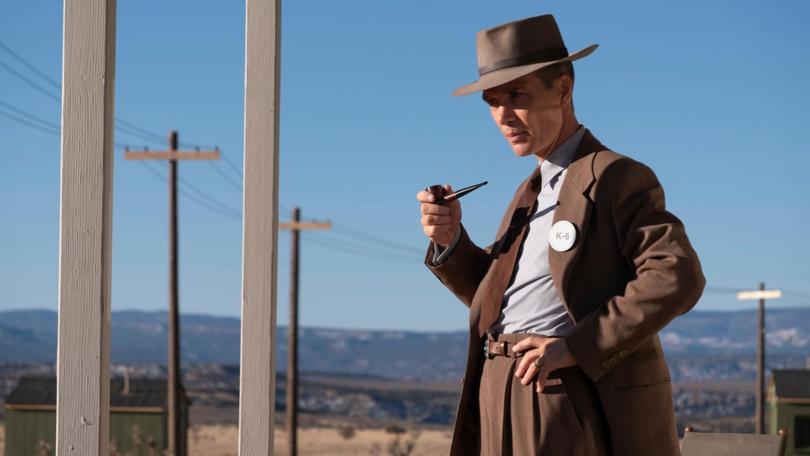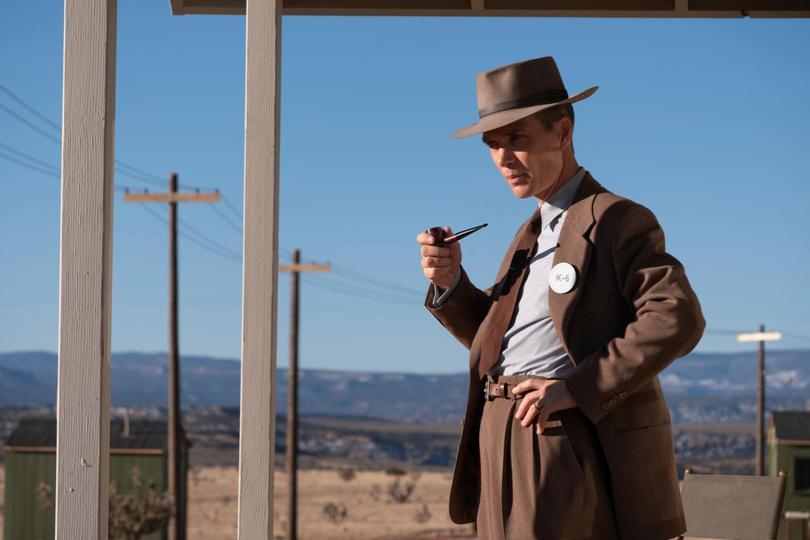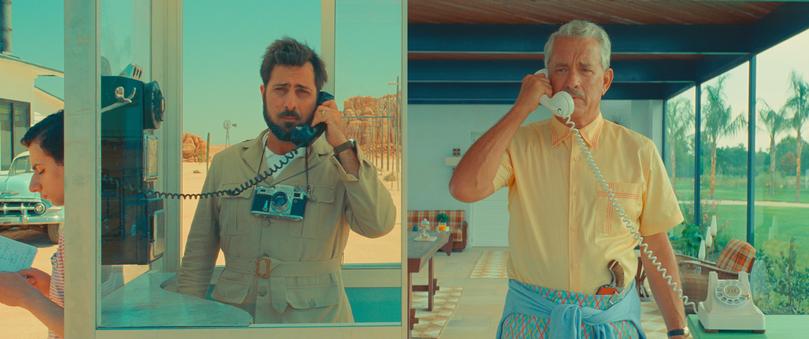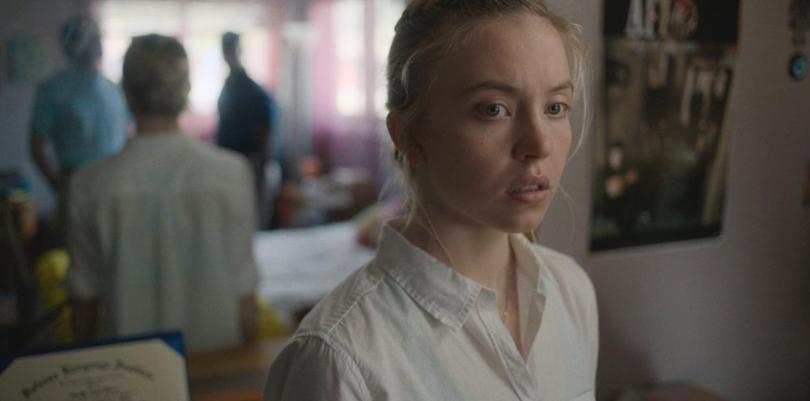The New York Times: The best movies of 2023

A Thrilling Bounty
I had a terrific movie year — you? I saw hundreds of new films with a variety of plots and styles made on every imaginable scale and budget. Some were from newcomers including A.V. Rockwell and others from the ever-new Martin Scorsese. Some you’ve heard of or will, while others scarcely made a ripple. Some were released by independents such as A24 and the tiny KimStim; others came from tech companies and still others from what are now often called legacy studios, a vaguely eulogistic term that suggests influence but also obsolescence.
The movies have ostensibly been at death’s door at least since the shift to sync sound, which isn’t to undersell the industry’s business woes. When the year began, it was still recovering from pandemic-forced shutdowns and slowdowns. “As 2023 Begins, Worry and Fear Linger After a Topsy-Turvy Year,” The Hollywood Reporter fretted, calling the ups and downs of the 2022 box office “dramatic.” Yet some Wall Street analysts were bullish on moviegoing. “We’re seeing a resurgence of interest back in the theaters,” one analyst told Yahoo in late January. I had just returned from the bounty at the Sundance Film Festival and was feeling bullish, too.
Sign up to The Nightly's newsletters.
Get the first look at the digital newspaper, curated daily stories and breaking headlines delivered to your inbox.
By continuing you agree to our Terms and Privacy Policy.As winter gave way to spring and summer, several of my favorite movies had been released in theatres and I had previewed several others at Cannes, where I had again been buoyed by what I had seen. At the same time, the drumbeat of worrying industry news continued when the Writers Guild went on strike on May 2 and several sure-bet blockbusters failed to charm audiences into theaters. “Indiana Jones and the Dial of Destiny” was “cursed,” read one headline; “‘Mission: Impossible 7’ falls short of expectations,” ran another. The moaning in the trades gave way to klaxon horns when much of the Screen Actors Guild-American Federation of Television and Radio Artists went on strike July 14. Two days later Barry Diller, who once ran Paramount, warned that the strikes could lead to the industry’s “absolute collapse.” Five days later, “Barbie” and “Oppenheimer” opened.
Old Hollywood embraced genre films but it also banked on variety, churning out musicals, Westerns, dramas, comedies, historical epics, detective and gangster tales and genre hybrids.
That phenom dubbed Barbenheimer buoyed the box office, the strikes ended, and here we are. It’s tempting to repeat William Goldman’s axiom that “nobody knows anything” and leave it at that. Except that this year also reminded us of some things that we have known for a while, including that women directors can make any kind of movie, from the intimately scaled to larger-than-life productions that become monster hits. This year also reminded us that a mass audience will happily get out of the house for movies without superheroes. And, on occasion, it won’t show up for movies with them, which was evident after disappointments from both the DC and Marvel studios as “Ant-Man and the Wasp: Quantumania,” “Shazam: Fury of the Gods,” “The Flash,” “Blue Beetle” and “The Marvels” sputtered in theatres.
Two other words that popped up regularly in the news this year were “superhero fatigue,” which should have surprised absolutely no one. Old Hollywood embraced genre films but it also banked on variety, churning out musicals, Westerns, dramas, comedies, historical epics, detective and gangster tales and genre hybrids. Some were interchangeable; others had fresh stories, distinctive visual styles and authorial flourishes. Now, though, the big studios are largely in the business of action-adventure franchises and serials; they bank on similarity, not variety. As of Nov. 30, half of this year’s top 20 grossing domestic releases fall in the action-adventure category, including a clutch of superhero flicks.
The mass turnout for both “Barbie” and “Oppenheimer” has been credited to everything from timing to originality, their meme-ability and people’s fear of missing out. Whatever the reasons for their success — and talent played a part, too — they proved that those Wall Street analysts bullish on moviegoing were onto something. That’s what else this year reminded us, and what I’m reminded of each week: Films can be great! They can embrace genre, play with it, transcend it. Their stories and their telling can be diverse, their quality thrilling, their art transporting. There’s more to movies than the industry, its crises and convulsions. In 1951, David O. Selznick, the producer of “Gone With the Wind,” rued that “there might have been good movies if there had been no movie industry.” The thing is, there have always been good movies despite the industry but, then, I’m a shameless optimist — I’m a film critic.
Here are my favourite movies of the year, all of which opened (or will open) theatrically in the United States. — MANOHLA DARGIS
1. ‘Killers of the Flower Moon’ (Martin Scorsese)
In this harrowing epic, Scorsese revisits a murderous crime spree perpetrated by white Americans — lovers and friends, ranchers and bankers, local lawmen and federally appointed guardians — against oil-rich members of the Osage Nation. The emotional center is an unspeakably cruel story of love and betrayal, a baroque conspiracy fueled by greed and an unshakable belief in white superiority. Manifest Destiny makes a hell of a gangster movie. (In theatres)

2. ‘Oppenheimer’ (Christopher Nolan)
With his customary pointillist detail and monumental sweep, Nolan tracks J. Robert Oppenheimer, the so-called “father of the atomic bomb,” from his tortured youth to later anguished years. Much of the film involves Oppenheimer’s role in researching and developing the atomic bombs that were dropped on Hiroshima and Nagasaki during World War II, world-defining catastrophes that eventually killed an estimated 100,000 to upward of 200,000 souls and helped usher in our self-annihilating, human-dominated age. (For rent on most major platforms)
3. ‘Menus-Plaisirs — Les Troisgros’ (Frederick Wiseman)
In this deeply pleasurable movie, Wiseman focuses on the Troisgros family, a dynasty of French chefs. Much of the film takes place in their celebrated restaurant-hotel in the Loire where the paterfamilias oversees a team that with love, ingenuity, choreography, sublime technique and a regard for the larger world create one astonishment after another for the delight and delectation of others — much like the genius behind the camera. (In theaters)
4. ‘Occupied City’ (Steve McQueen)
In his startling and formally rigorous 4 1/2-hour documentary, this British director (“Twelve Years a Slave”) uses everyday scenes from contemporary Amsterdam to map — street by street, address by address — the disastrous fate of the city’s Jewish population during World War II. The movie was written by Bianca Stigter, McQueen’s wife, and informed by her book “Atlas of an Occupied City: Amsterdam 1940-1945.” (Opening Dec. 25 in theaters)
5. ‘A Thousand and One’ (A.V. Rockwell)
In her knockout feature debut, Rockwell follows a young woman (a wonderful Teyana Taylor) across the years — it opens in the mid-1990s — as she raises her son in a rapidly gentrifying New York. Rockwell was born and raised in Queens, and she has a deep feeling for the city and the people who, far from the corridors of power and despite the onslaughts of power’s rapacious mercenaries, have always given New York its lifeblood. (Stream it on Prime Video)

6. ‘Asteroid City’ (Wes Anderson)
In the small fictional Southwest town where much of this movie takes place, worlds collide, a love story (or maybe two) blooms and fades, children outwit adults and an extraterrestrial makes a surprising touchdown. With dexterity and complexity, tenderness and deadpan delivery, meticulous technique and mesmerizing colors, Anderson plays with different media and performing arts for a story about storytelling that’s wry, comic and tragic. (Stream it on Peacock)

7. ‘May December’ (Todd Haynes)
In this unsettling, perverse movie about that performance called life, an actress, Elizabeth (Natalie Portman), visits the inspiration for her next movie. That would be Gracie (Julianne Moore), a homemaker who likes to bake cakes and happens to be an ex-con, having been imprisoned for having sex with an underage boy she later wed. (A terrific Charles Melton plays her tragic husband.). Things get very complicated, and then crushingly sad. (Stream it on Netflix)
8. ‘Showing Up’ (Kelly Reichardt)
Reichardt’s latest follows Lizzy (a delicately restrained and revelatory Michelle Williams), a sculptor in Portland, Oregon, as she prepares a new gallery show while contending with friends, family, her very bad cat and a wounded pigeon. For Lizzy, making art is an act of self-creation and a way of being, which I suspect means that this lovely, modestly scaled movie is also somewhat of a directorial self-portrait. (Available for rent on most major platforms)
9. ‘Orlando: My Political Biography’ (Paul B. Preciado)
In this essayistic documentary, Preciado — a Spanish-born transgender philosopher and activist making his directing debut — uses Virginia Woolf’s novel “Orlando: A Biography” as a springboard to explore the complexities and many cages of identity. Drawing on a wide range of sources and aided by 20 trans and nonbinary performers, Preciado has made a movie that’s playful, urgent and as intellectually inspiring as it is emotionally exhilarating. (In theaters)
10. ‘Stonewalling’ (Huang Ji and Ryuji Otsuka)
It’s 2019 when this understated, formally rigorous heartbreaker opens and the painfully young Lynn (Yao Honggui) is facing a series of daunting hurdles, including her rotten boyfriend, bickering parents, no job and an uncertain future. By the time the story ends it’s early 2020, everyone is wearing surgical masks and Lynn is exhausted, having tried every imaginable gig and hustle. She is also pregnant, and now has something of exchange value. (Streaming on Criterion)
Ten more:
“All Dirt Roads Taste of Salt,” “Earth Mama,” “Fallen Leaves,” “Ferrari,” “John Wick: Chapter 4,” “Past Lives” “R.M.N.,” “Scarlet,” “Will-O’-the-Wisp,” “Youth (Spring).”
Where Evil Lies
This was the year of evil at the movies: gut-wrenching, bone-chilling, ordinary evil. It didn’t wear villainous capes, nor did it often arrive in the expected horror movie package. That’s why it was so terrifying.
The movies this year posited that evil’s opposite isn’t goodness; it’s reality. Evil was something for men of science, like J. Robert Oppenheimer, to wrestle with, realizing that when the physical universe intersects with human ethics, no decision can really be neutral. Evil was discussed at Cannes in the news conference after “Killers of the Flower Moon,” a film about how barbarous civilization can be. In “The Zone of Interest,” unspeakable evil is obscured, willingly, by people who are just going about their everyday business. Bureaucratic language and euphemism keep them from having to acknowledge the horrors they’re perpetuating.
In fact, the way language can mask and produce evil — especially the banal sort that stems from self-delusion — was all over the movies this year. Todd Haynes’ juicy “May December” is loaded with willful blindness on the part of characters who can’t even form the words to tell the truth about their lives. Justine Triet’s “Anatomy of a Fall” takes a marriage built on linguistic compromise — the partners communicate in English, a second language for both — as the jumping-off point for a story about the everyday violence that careless words incur, whether in the courtroom or the living room. And perhaps the strongest and most daring of these was “Reality,” which uses a real interrogation transcript to show the bendiness of words, the way power and justice can be warped to manipulate, well, reality.
Any form of art is capable of exploring the nature of evil. But there’s something about cinema — immersive, time-bound, hitting several senses at once — that feels uniquely suited for the task.
When the great novelist Cormac McCarthy, no stranger to the movies himself, died this year, I found myself thinking about him because his vision of evil was far more in line with these depictions than the cartoon villains Hollywood typically serves up. To McCarthy, evil was a force or a being that stalked humanity, the basic fact of the human condition, nearly impossible to resist and embedded somehow in language. In his 1994 novel “The Crossing,” a character says that “the wicked know that if the ill they do be of sufficient horror men will not speak against it.” In fact, “men have just enough stomach for small evils and only these will they oppose.”
If he’s right, that may be why the antidote to cinematic evil could be found in people speaking words of healing to one another, facing truth together. The couples at the center of “The Eternal Memory” and “American Symphony,” the chaplains of “A Still Small Voice,” the family of “You Hurt My Feelings” — all are people who have found that in the midst of an impossible world, communicating with one another is what lets us go on.
Any form of art is capable of exploring the nature of evil. But there’s something about cinema — immersive, time-bound, hitting several senses at once — that feels uniquely suited for the task, since evil is something more readily identified in the gut than in the conscious mind. In a world increasingly unmoored from reality, where we can barely trust what we see with our own eyes, evil floats freely. Maybe cinema can give us language to face it courageously. — ALISSA WILKINSON

1. ‘Killers of the Flower Moon’ (Martin Scorsese)
From the start of his career, Scorsese has been obsessed with guilt: What does it mean to be guilty? Is anyone really innocent? Is forgiveness possible, or just a convenient fantasy? The many-layered “Killers of the Flower Moon” offers perhaps his broadest take on the topic yet — proceeding from the firm belief that guilt is generational, just like grief, and that telling the story (in this case, of the systematic murder of Osage members) is both fraught and impossible to avoid. (In theatres)
2. ‘Past Lives’ (Celine Song)
Once in a while, an understated stunner from a debut director (in this case, playwright Celine Song) arrives early in the year, grabs you by the heart and won’t let go. For me that happened all the way back at Sundance in January with “Past Lives,” about a woman (Greta Lee) contemplating the lives she could have led and thus the choices that created the one she does lead. With magnificent co-stars in Teo Yoo and John Magaro, it’s brilliant and moving, an examination of destiny, chance, love and the invisible thread that binds one soul to the next. (For rent on most major platforms)
3. ‘The Zone of Interest’ (Jonathan Glazer)
Based loosely on a Martin Amis novel, “The Zone of Interest” bone-chills by omission, its meaning contained in what’s not onscreen. The story concerns the family of Rudolf Höss (Christian Friedel), commandant of Auschwitz, who lives an idyllic life with his family just outside the walls of the notorious extermination camp. His wife (Sandra Hüller) runs a peaceful household, proudly showing her life to her mother when she visits. But you can hear, and almost smell, what’s going on over the wall. It’s a nauseatingly and formally bold inquiry into the extent to which humans can, and do, willfully blind themselves to evil. (Opens in theaters on Dec. 15)

4. ‘Reality’ (Tina Satter)
“Reality” stars Sydney Sweeney as Reality Winner, the former National Security Agency translator imprisoned for leaking information about Russian interference into the 2016 elections. Adapted from a play also written and directed by Satter, the dialogue is a verbatim (and sometimes redacted) transcription of the FBI’s interrogation of Winner at her home before her arrest. Sweeney is incredible in the role, the anchor of a furious, true thriller. But what stands out is the way “Reality” forces us to question what’s real on several levels — not just whether and when a government is trustworthy, but also when language deliberately obscures reality, and whether the movie itself is fiction, documentary or something uncomfortably in the gray area between. (Streaming on Max)
5. ‘A Still Small Voice’ (Luke Lorentzen)
Early in the pandemic, at New York’s Mount Sinai Hospital, a group of chaplaincy residents are caring for patients and their families while dealing with their own grief and fear. Lorentzen’s observational documentary (which he largely shot himself) follows one resident, Mati, and her supervisor. Mati’s idealism is challenged as she ministers to people of all faiths and none in particular while simultaneously experiencing her own crisis of faith. The nature of mercy, mortality and belief in the face of unimaginable pain makes this, somehow, a hopeful film, though it’s a hard-won hope. (In theatres)
6. ‘Oppenheimer’ (Christopher Nolan)
One-half of the year’s biggest moviegoing event, “Oppenheimer” is at its core an examination of power, both in the geopolitical and the atomic sense. Nolan’s choice to split the film along two power-generating acts, fission and fusion, underscores the point: While the film is largely about the Manhattan Project and the moral compromise Oppenheimer wrestles with, it’s also about man’s petty battles to gain power without regard for the future. Nolan is obsessed with the interplay between the scientific and the humanist, and thus it’s a perfect match. (For rent on most major platforms)
7. ‘Smoke Sauna Sisterhood’ (Anna Hints)
A number of good and much buzzier films from this year — “Barbie,” “Poor Things” — chronicled women’s journeys toward becoming their own heroes in a world still tilted toward patriarchy. But the Estonian documentary “Smoke Sauna Sisterhood” is the one that’s stuck with me most. Women gather in a smoke sauna (we see their tightly framed nude bodies, shot from the neck down, for most of the film) repeatedly throughout a calendar year. They discuss the painful and joyful realities of their lives: fears and hopes, romances and abuses, weaknesses and strengths. Visually striking and uncommonly frank, it gets at an authenticity that few fiction films can fully capture. (In theatres)

8. ‘Godland’ (Hlynur Palmason)
It’s the 19th century, and a young Danish priest with plenty of self-regard has decided to lead a church in remote Iceland (at that time a Danish colony). What he discovers on the frigid shores is a beguiling landscape that’s wholly indifferent to his existence. Watching him disintegrate when confronted with the reality of his calling is both tragic and darkly funny, but the deeper meaning is what remains: We can plan all we want to change the world, but the world usually gets the best of us. (Streaming on the Criterion Channel)
9. ‘The Eternal Memory’ (Maite Alberdi)
Alberdi’s haunting documentary centers on Augusto Góngora, one of the most famous cultural journalists in Chile, and his wife, Paulina Urrutia. Góngora is living with Alzheimer’s, and Alberdi parallels his slowly deteriorating mental state with his lifelong fight to preserve Chile’s history and collective memory. Without memory, Góngora says, we are lost. What anchors him is Urrutia’s fervent love, a bond so strong that it can withstand tragedy — and there are lessons there for nations that wish to wipe away their own memories. (Streaming on Paramount+)
10. ‘Menus-Plaisirs — Les Troisgros’ (Frederick Wiseman)
Wiseman, America’s greatest chronicler of institutions, turns his observational documentary eye toward La Maison Troisgros, a three-star Michelin restaurant in Roanne, France, run by several generations of the Troisgros family. While the food looks delectable and the diners are often very funny, the true joy of Wiseman’s film is his subtle weaving of a point into it all. Future generations of artists and chefs, diners and growers depend upon balancing profit with careful cultivation today, whether it’s in the way a kitchen runs, the way grapes are grown or the way a family plans its business. That balance is evident throughout the film, which is a sensory delight and at times almost balletic in its touch. (In theatres)
And don’t miss:
“Afire” (Christian Petzold), “American Fiction” (Cord Jefferson), “American Symphony” (Matthew Heineman), “Anatomy of a Fall” (Justine Triet), “Anselm” (Wim Wenders), “Are You There God? It’s Me, Margaret” (Kelly Fremon Craig), “Barbie” (Greta Gerwig), “BlackBerry” (Matt Johnson), “Eileen” (William Oldroyd), “Fallen Leaves” (Aki Kaurismaki), “Four Daughters” (Kaouther Ben Hania), “The Holdovers” (Alexander Payne), “May December” (Todd Haynes), “Poor Things” (Yorgos Lanthimos), “Priscilla” (Sofia Coppola), “The Royal Hotel” (Kitty Green), “Showing Up” (Kelly Reichardt), “The Starling Girl” (Laurel Parmet), “The Taste of Things” (Tran Anh Hung), “You Hurt My Feelings” (Nicole Holofcener)
This article originally appeared in The New York Times.
© 2023 The New York Times Company
Originally published on The New York Times
